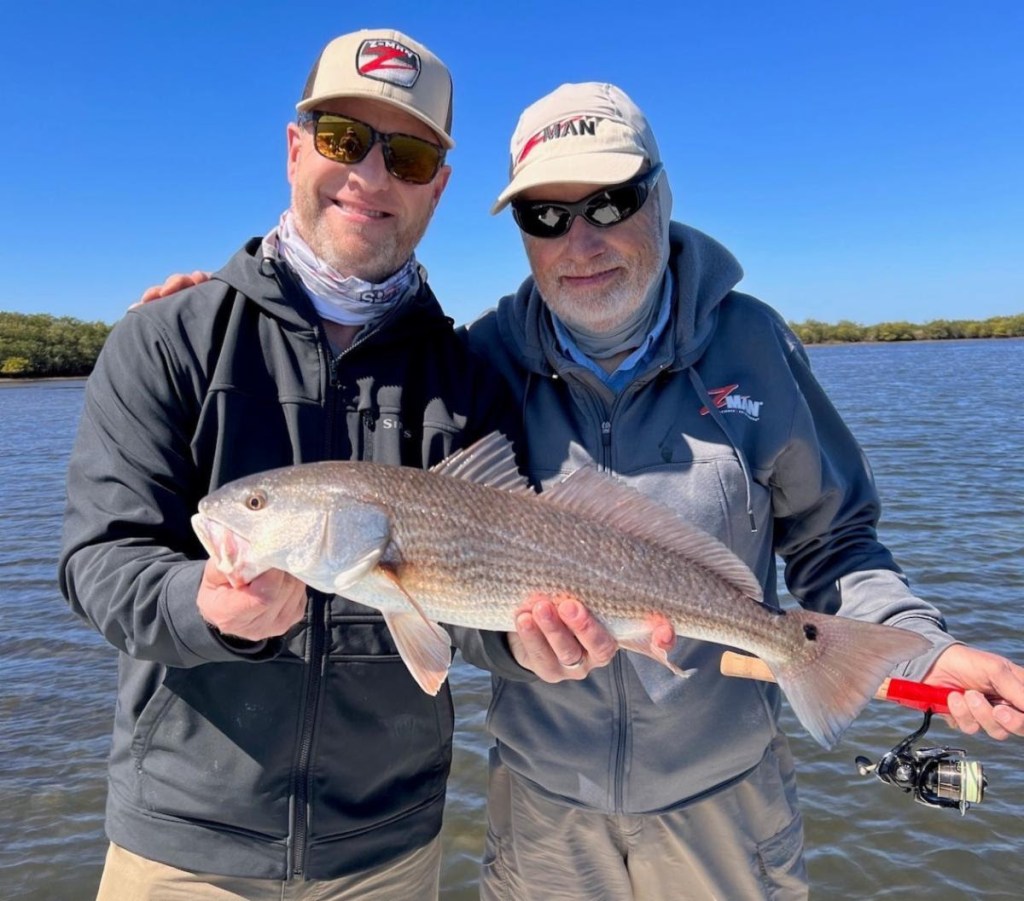
Ladson, SC – Crafting high-grade fishing tackle remains a worthy endeavor only insomuch as the fish and their environs flourish. It’s a simple, self-evident idea that’s quietly inhabited the hearts and minds of the people behind Z-Man Fishing Products since day one. It’s also the motivation behind Z-Man’s support of the scientists who keep our fisheries brimming with aquatic life.
Upholding its continuing commitment to aquatic conservation, Z-Man Fishing Products recently played a principal role in the U.S. Fish & Wildlife Service’s (USFWS) efforts to bridge the gap between tackle manufacturers and fisheries management. In April, Z-Man hosted the first Partner with a Payer event within the recreational fishing industry, bringing together industry leaders from USFWS, the American Sportfishing Association (ASA) and the South Carolina Department of Natural Resources (SCDNR).
Kicking off the event, the team at Z-Man led fishery scientists and managers on a tour of its state-of-the-art Charleston, South Carolina based tackle manufacturing facility. The visit showcased Z-Man’s ongoing commitment to sustainable, conservation-oriented business practices, such as a newly installed solar array and the domestic manufacture of its non-toxic ElaZtech® softbaits. The event also included a field and fish hatchery tour guided by the SCDNR, demonstrating the success of the Wildlife & Sport Fish Restoration program in South Carolina.
Bridging the gap between related sportfishing groups, Partner with a Payer provides a platform for discussing impactful fisheries issues and opening a dialogue regarding fishing tackle excise taxes and how the dollars help fund conservation. According to the USFWS, America’s fishing equipment manufacturers have shared a partnership with state and federal biologists through the Dingell-Johnson Act since 1950.
“Many anglers probably don’t realize that purchasing fishing tackle from reputable companies like Z-Man (that pay a 10-percent federal excise tax) helps fund critical fishery research and conservation projects,” noted Z-Man President Daniel Nussbaum, who led the factory tour. “The excise tax dollars we pay go to a federal fund that is apportioned among the states and ultimately makes up 40-percent of states’ budgets for fisheries management, access, and education programs.”
Nussbaum further explained the flow of funds, from the angler to federal and state agencies tasked with critical fishery and habitat initiatives. “Initially, I had no idea where this money went or even how it was spent,” said Nussbaum. “But after seeing how the funds are used, I now view it as the fishing industry’s way of giving back to support the resources we ultimately depend on for sales. In essence, the Wildlife & Sportfish Restoration (WSFR) program represents a partnership between private businesses, the federal government, and state agencies. The more we all engage, the more each of us can benefit from this partnership.”
Thanks to Z-Man’s longstanding partnership with the South Carolina DNR, Nussbaum learned that the excise tax dollars paid by Z-Man and other manufacturers enter a WSFR fund managed by the US Fish & Wildlife Service, which is distributed back to the states in turn. “Through industry summits and facilities tours, I’ve seen firsthand how the money is being used to fund programs like fish hatcheries and stocking, education initiatives, conservation projects, public access enhancement, and enforcement,” he noted.
Paul Wilkes, USFWS’s Southeast Regional Manager for the Wildlife & Sportfish Restoration Fund, says the 72-year-old partnership between the tackle industry and wildlife management agencies has been “transformational” for fisheries management. “When we go out and fish, we don’t worry whether or not we have fish to catch and that’s due to the success of this program,” Wilkes added.
ASA President Glenn Hughes further notes that thanks to these funds, today’s angler enjoys abundant angling opportunities, without which the fishing landscape would be dramatically diminished: “The Sportfish Restoration fund is probably one of the best kept secrets in America,” said Hughes. “That’s a shame because everybody should know how much anglers do for conservation. It’s the products we buy from these manufacturers (who pay this excise tax) to ensure we have good fishing for generations.”
For example, Hughes says the funds pay for the maintenance of over 6,000 U.S. boating access sites to lakes, rivers, ponds and streams and the stocking of 1.3 billion fish of over 70 species, each year.
Independently, Nussbaum says Z-Man’s longstanding conservation crusade has led his company to help fund fishery research and management, such as South Carolina seatrout restoration and providing paid assistantships for graduate fishery students and other aquatic based initiatives. Via its close relationship with SCDNR, Z-Man was the natural choice to host of the very first Partner with a Payer outing.
“To be selected as the first fishing manufacturer to host the event was especially exciting because conservation and environmental stewardship have always been cornerstones of our business here at Z-Man,” Nussbaum affirmed. “Not only do we strive to use materials—like ElaZtech soft plastics—that are more sustainable and reduce our carbon footprint via power generation from our newly installed solar array, but we’ve also consistently supported conservation and fisheries research initiatives.
“Even though many in the fishing community may not be aware of these efforts, all anglers should understand that when they purchase fishing tackle made by reputable companies like Z-Man, they’re supporting the efforts of state agencies to improve our fisheries nationwide.”





